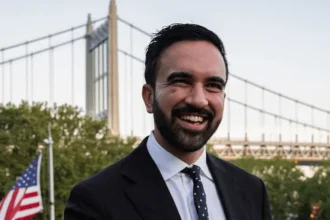UNAids Executive Director Winnie Byanyima said the United States’ decision to stop paying international aid, including support for HIV programs, may cause an extra 2,000 new HIV infections every day and nearly six million deaths in the following four years. The HIV Funding cuts constitute a worldwide health emergency since they could undo years of effort in eradicating the illness.
- What are the immediate effects of the US aid suspension?
- Why Paused Foreign Aid: US Government?
- Which nations suffer the most from Funding shortfalls?
- Are other nations filling in for us?
- What Potential Remedies Have Suggested?
- How Are US Budget Cuts Affecting Other UN Agencies?
- What Long-Term Effects Might HIV Funding Cutbacks Have?
With annual mortality from HIV declining from nearly two million in 2004 to 600,000 in 2023, the decreases coincide with a period of notable global HIV epidemic control. However, the reduction in HIV Funding risks significantly reversing these advances, endangering millions of people to become infected and aggravating an already complex public health issue.
What are the immediate effects of the US aid suspension?
Ms. Byanyima cautioned that stopping foreign aid from the US government has already had disastrous effects. Many US-funded HIV treatment and prevention initiatives have gotten stop-work orders, forcing the closure of vital clinics for women and children in Africa and resulting in severe shortages of lifesaving antiretroviral (ARV) drugs.
“We are already seeing the terrible impact of these cuts,” she stated. “Women and girls are suffering especially badly. Clinics are closing, leaving those dependent on ARVs without the medication required for survival.”
Apart from the direct influence on HIV-positive people, healthcare systems in the afflicted nations are under more demand. Without enough money, healthcare workers cannot perform required tests, preventative care, and education programs—vital in stopping the virus from spreading. Additionally, being forced to close are community-based projects essential in preventing transmission and aggravating the situation.
Why Paused Foreign Aid: US Government?
US President Donald Trump announced that Funding would stop on his first day in office in January, in line with a more extensive review of government expenditures. Initially stopping international aid for ninety days, the decision later stopped most US Agency for International Development’s (USAID) initiatives.
Historically, the US has been the biggest donor of HIV treatment and prevention funds. Ms. Byanyima noted this kindness but underlined, “While it is reasonable for the US to consider reducing their Funding over time, the sudden withdrawal of lifesaving support is having a devastating impact.”
Critics of the Funding cuts contend that the choice is naive and could result in more long-term healthcare costs. The spread of HIV is likely to grow without continuous investment in prevention and treatment, which would result in higher hospitalizations, loss of productivity, and more economic burden on afflicted countries.
Which nations suffer the most from Funding shortfalls?
The World Health Organisation (WHO) has before cautioned that the HIV Funding cuts might soon cause eight countries—Nigeria, Kenya, Lesotho, South Sudan, Burkina Faso, Mali, Haiti, and Ukraine—to run out of HIV medications. The disturbance to HIV programs “could undo 20 years of progress,” WHO Chief Tedros Adhanom Ghebreyesus warned.
Leading AIDS activist group Treatment Action Campaign (TAC) in South Africa has expressed grave concerns. “We cannot afford to die,” remarked TAC Chair Sibongile Tshabalala. “We cannot afford to travel back to those years when we were suffering with access to services, especially for persons living with HIV treatment.”
These nations, with some of the highest rates of HIV worldwide, mainly depend on outside help to keep their healthcare systems running. The unexpected loss of money has left countries searching for other answers, but many find it challenging to cover the void created by the US leaving.
Are other nations filling in for us?
European assistance donors are not stepping up to meet the cash shortage. Other countries have not made any pledges to help UNAids close the US-left void.
Some local governments and non-governmental organizations (NGOs) are trying to coordinate supplies to help ease the situation. Experts caution, nevertheless, that these initiatives will not be enough to stop the disastrous comeback of the HIV epidemic without significant and continuous worldwide assistance.
What Potential Remedies Have Suggested?
Ms. Byanyima suggested a deal to the Trump administration wherein Lenacapavir, a new US-made ARV injectable manufactured by Gilead, might be marketed to millions of people, helping to alleviate the issue. Given this once-every-six-month new treatment, she thinks 10 million people could gain from it.
She said, trying to appeal to economic forces that might influence Washington decision-makers, “The profits and jobs resulting from such a deal would be hugely beneficial to the US.”
Several health advocates advise impacted countries to consider joint ventures with business leaders and charitable organizations to raise emergency money. Though the Global Fund to Fight AIDS, Tuberculosis, and Malaria has been called upon to raise Funding, it also suffers financial limitations due to competing worldwide health objectives.
How Are US Budget Cuts Affecting Other UN Agencies?
UNAIDS is only one of numerous UN agencies suffering budget cuts. While UNICEF has raised worries that initiatives to lower infant mortality could be seriously hampered, the UN Refugee Agency has cautioned that it may have to cut 6,000 jobs. The World Food Program also has to cut food supplies in areas at risk of famine.
Especially concerning is the linked character of these cuts. For food aid, for instance, lower financing could result in higher malnutrition among HIV-positive people, therefore impairing their ability to follow treatment plans. Similarly, cuts to refugee assistance services could deny vital healthcare services to displaced people—who are already highly HIV-risk.
What Long-Term Effects Might HIV Funding Cutbacks Have?
Should the reduction in HIV financing be maintained, the effects might be broad. Experts caution that neglect of HIV treatment programs can result in medication resistance, therefore reducing the efficacy of current medicines. This could cause the virus to resurface, undoing decades of medical progress and resulting in more future worldwide health expenses.
One cannot overlook the more general economic influence. Many nations impacted by these cuts battle poverty and shaky healthcare systems. Apart from decreasing medical facilities, an increasing HIV epidemic would lower workforce productivity, impede economic development, and widen social inequality.
Long acknowledged as a worldwide endeavor needing constant cooperation and financial dedication is the fight against HIV. Millions of lives hang in the balance without quick intervention, and the globe is likely to lose its hard-earned development over the past two decades.
The situation is still dire, and global health organizations worry that the HIV Funding cuts might undermine decades of progress in the fight against the disease even if the US seems to be altering its stance.








